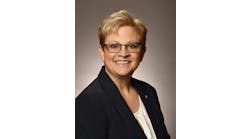As the COVID-19 pandemic stresses the healthcare system, there is tremendous opportunity for the front lines in payer communications to make an enormous impact on the lives of health plan members.
Contact center representatives (CSRs) and leadership in contact centers are faced with the demands of continuously pivoting to evolving care delivery models, prescription adherence challenges, and populations struggling to stay well physically and mentally when standard ways of doing so are limited or unavailable.
CSRs working remotely, and those who continue to go to the office, are addressing new member inquiry types and members who may not know precisely what to ask, all depending on their experience with health insurance or within the healthcare system. In addition to an array of questions about COVID-19 coverage, they are dealing with distressed members who may have lost jobs, are unable to afford next month’s premium, or are wondering if they’re still eligible for coverage at all. At the same time, like all of us, CSRs are dealing with the pandemic’s disruptive impact on every aspect of their personal lives—their families, finances and their own health.
In the midst of this uncertain and high-stress time, how can payers prioritize investments that will ease the stress and efforts of their frontline staff, while delivering a more personalized experience for their members?
Investments in critical areas of need will certainly benefit members in the near-term and will also position health plans for the new reality shaped by this pandemic and the health insurance response. Many of these items may be on existing customer service or customer experience roadmaps but current conditions and member needs make it critical to act on them now. But, there is still precious time before companies and consumers begin to think about open enrollment. Payers should use this window to make a positive impact with smart CSR-related investments by doing everything possible to protect members in this time of need and serve your communities in the future.
Treat each member based on their needs. Frequently referred to as personalization, let’s take this idea to its most basic level. Members are looking for information they can understand and next steps that will solve their needs as easily and quickly as possible. Equip your CSRs with both the tools and latitude to deliver a meaningful and value-add member experience from a place of empathy.
Quickly spin up personas on which to base current and emerging member needs. Consider how the pandemic is changing members’ needs. How will job insecurity or financial uncertainty affect them? Does a member live in a region severely affected by the virus or restricted by shelter-in-place orders that limit access to physical resources?
In addition to real-time CSR handling of member inquires, take action to close gaps in member data so CSRs have the data to guide members based on their personal needs. The emergent nature of the pandemic can act as an accelerant to capture email and text permissions from members to increase engagement points.
Health plans can use data to develop messaging and content specific to defined segments and deliver those via preferred channels. They can also use data to build triggers by zip code or recent coverage changes that alert CSRs to a member’s needs, allowing them to quickly direct their questions and responses.
Empower the frontline to be more proactive and guiding. Create CSR desktop workflows that leverage all of building blocks for personalization. For example, if a member lives in an area with shelter-in-place orders, a CSR can remind them of their telehealth options for care or options for mail order delivery of medications.
Now is the time to arm CSRs with the ability to ask questions and provide answers such as:
Prescription drug refills:
- How do I safely get my prescription?
- What are mail order options for 90-day refills?
- Options for early re-fills?
- What are delivery options?
- Are there shortages of my regular brands?
- How can I afford my share with loss of income?
Alternate options for regular care:
- What disease management programs offer telehealth services?
- How to navigate telehealth services (considering members’ varying levels of comfort navigating this new access mode)?
- Are telehealth services available for behavioral health?
Give CSRs the internal and external connections to act as centers of information. Update interactive voice response (IVR) and routing among functional teams such as member services, sales and financial assistance. Simplify CSRs access to subject matter expert (SME) resources to quickly provide members with relevant support and build links to COVID-19-specific websites and tools that CSRs can share with members. Finally, be sure staff gets the training to confidently use these new workflows.
Support your changing workplace as more CSRs work remotely.
Managing remote resources is a growing challenge for large payer organizations as more CSRs work from home. Consider the best ways to support remote office needs, including matters of privacy, data security and compliance standards. Develop a curriculum for supervisors to manage the unique conditions of remote work.
What do remote CSRs need to be successful? Give them a budget to cover the costs of setting up a home office or using a co-working facility. Funding should go beyond hardware and software to include the costs of internet, mobile/data costs, as well as desk and office furniture. Remote workers also need the same robust technical support standards for set-up, repairs and replacements that they would have on-site.
Plan now to accommodate the different needs that come with working from home. Consider alternate schedules to accommodate at-home interruptions, such as childcare needs. Working from a home office while the kids are out of school may call for more—sometimes unforeseen—breaks during the day.
Find ways to keep and build camaraderie and escalation channels across dispersed locations. Encourage connections with remote teaming, and keep team meetings. Use secure group chats to broaden the CSR support team for difficult member queries. Leverage your internal social media to increase communications from the management team. For example, use secure group chats to get immediate questions answered.
Elevate your service culture—together.
Giving CSRs a positive employee experience is directly related to a positive member experience. Payers that focus on the well-being of their frontline staff retain good people, increase member satisfaction, and build strong, sustainable brands.
Make culture a priority. Engage CSRs in developing practical ways to manage stress based on their individual needs and experiences. Create forums and practices that encourage them to share a bit of who they are with each other. It’s a solid way to build camaraderie and support. Daily stand-ups around cultural norms are more important than ever to keep team spirit strong. Go ahead—have those birthday celebrations, even if they are virtual.
Reinforcing a “we’re all in this together” mindset can have a lasting impact. For instance, it may be that once-siloed operations are starting to work together in new and better ways. That’s an improvement that will benefit an organization long after this crisis is over. Survey the team; identify gaps and ineffective long-standing norms. Use this time to build on people’s willingness to come together around making positive change.
It’s time to pull out the stops to support your CSRs so they, in turn, are equipped to support your members’ needs during this challenging time. Leading with empathy and investing in service improvements will not only ease the burden on your contact center staff but will position you for a stronger future. The steps you take now to help your frontline people shine during this dark time are the best investments you can make.
Matt Henry is a senior managing consultant at Point B and Susan Yeazel is a customer director at Point B.

